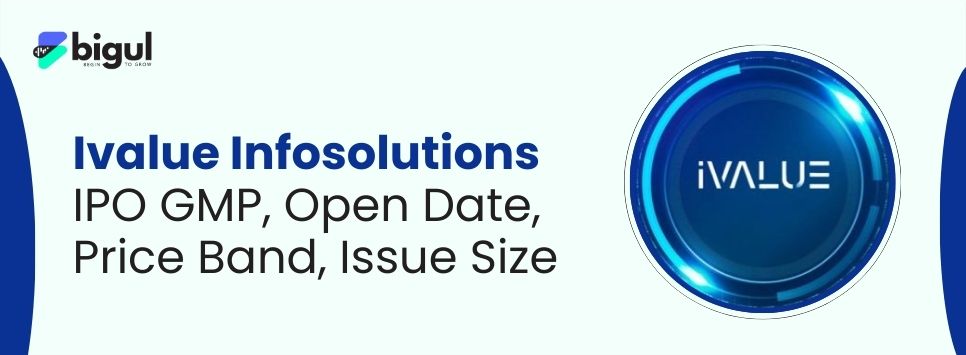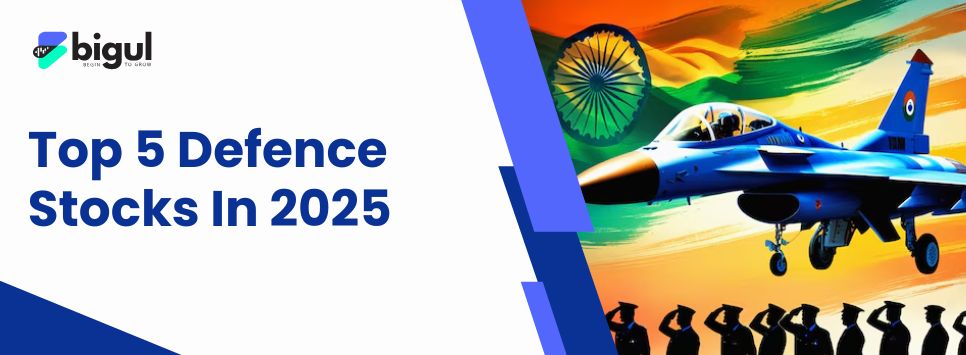India’s defence manufacturing sector is buzzing. Recent policy support (like Make in India and higher FDI caps) has spurred growth in companies building fighter jets, warships, radars and missiles.
In this survey, we rank the top 5 listed defence stocks by market capitalisation (mid‑2025 data) – not as investment tips, but to highlight the major players. Each section below introduces one company, its role in India’s defence ecosystem, key products or partnerships, and why it matters for national security or self-reliance.
Larsen & Toubro Ltd (L&T)
L&T Company isn’t a pure-play defence firm, but it has become India’s biggest defence supplier by market cap—its L&T Market cap has soared to Rs 503,673 Cr by mid-2025. This L&T Company surge reflects robust Navy contracts and “Make in India” momentum, boosting L&T's Market cap to record levels. It is one of the best defence stocks which has given the highest returns in the past one year.
The L&T Market cap underscores investor confidence in its broad defence portfolio. The L&T stock Price has rallied in tandem with these wins, and the sustained rise in L&T stock Price mirrors strong order inflows and production ramp-ups. Analysts remain upbeat on L&T stock Price outlook as the company scales up shipyards, artillery lines, and offshore vessel builds.
This Pune-based conglomerate has leveraged “Make in India” to expand its defence arm, making L&T Company a multi-billion-dollar business. Its defence portfolio spans warships, submarines, artillery, armoured vehicles and missile systems. Notably, L&T’s Kattupalli shipyard near Chennai can build large destroyers and conventional submarines, and its armoured vehicle unit partners with foreign OEMs—driving further investor interest in L&T Company equity.
This defence company has secured big Navy contracts for frigates and corvettes and is ramping up minesweeper and offshore vessel production. In short, L&T Company’s breadth—from steel gun mounts to sensor suites—makes it a linchpin of India’s push for domestic defence manufacturing, directly strengthening maritime security and supporting Army and Air Force capabilities.
Hindustan Aeronautics Ltd (HAL)
HAL is perhaps the face of India’s Make-in-India aerospace dream, with a HAL Market cap that reflects its Navratna stature and strategic importance. In a conversational style: “From the fiery cockpit of a jet to the rotors of a helicopter, HAL’s creations keep our air force flying.” As a Bengaluru-based PSU founded in 1940, HAL designs and builds most of India’s military aircraft and helicopters—an achievement that has steadily grown its HAL Market cap over the years. This defence stock is currently under downtrend and has given -7% in the past one year
These defence company production lines churn out fighters like the indigenous Light Combat Aircraft (LCA) Tejas, licensed Sukhoi-30MKIs, and HAL-developed jets like the HF-24 Marut (India’s first fighter-bomber), all of which contribute to both defence capability and investor confidence in its HAL Market cap.
On the rotary-wing side, HAL makes Dhruv and Rudra helicopters and recently India’s first light combat helicopter (LCH), Prachand—developments that have driven a notable uptick in HAL's stock price. HAL also co-develops and manufactures avionics and sensors (radars, navigation systems) and maintains jets after delivery, further underpinning its performance and HAL stock price momentum. Partnerships include licensed production (e.g., Tejas in collaboration with ADA/DRDO, and British FT-50 trainers) and joint development (HAL builds jet engines with foreign tech partners), all factors that the market rewards with an elevated HAL stock price.
In national security terms, HAL is mission-critical, as it ensures that air dominance and patrol capabilities are homegrown. Its flagship projects—like the Tejas, LCA trainers, and LCH—advance self-reliance by replacing imported aircraft, in line with “Atmanirbhar Bharat,” and sustain both its HAL Market cap and HAL stock price as cornerstones of India’s aerospace sector.
Bharat Electronics Ltd (BEL)
BEL Company is the government’s electronics powerhouse for defence, reflected in its rising BEL market cap. An approachable intro: “If HAL builds the planes, BEL builds the brains – radars and fire-control for those planes.” Founded in 1954 and now a Maharatna PSU, BEL Company makes advanced electronic equipment and systems for the armed forces, driving confidence in its BEL market cap and underpinning a solid BEL stock price. Its product lines include radar systems, missile guidance units, communications gear, night-vision devices, electronic warfare suites and naval sensors—factors that support a healthy BEL stock price and further boost its BEL market cap. These defence stocks is one of the favourite stocks of investors. It has given a return of 35% in the past year.
For example, BEL produces the Ashwini low-level radar and the Akash missile’s control systems. A recent milestone: in March 2025, the MoD inked a Rs 2,906 Cr deal with BEL Company for DRDO-designed Ashwini radars – a transportable air-defence radar. This contract “enhances the IAF’s capabilities” and “boosts indigenous manufacturing, reducing foreign dependence” – echoing national-security and Make-in-India goals, which in turn have helped lift the BEL stock price.
BEL Company also sells minefield locators, sonars, and satellite communication equipment to the Navy and Army. It collaborates with the DRDO (many products are DRDO-designed) and ties up with foreign tech (e.g. BEL-Rafael JV) to localize key systems. In short, BEL stands out for “smart bullets” – the electronics that make weapons and soldiers ‘talk’ and detect threats. Its gear is deployed on tanks, ships, aircraft and even soldier radios. By equipping our forces with homegrown radars and EW, BEL Company directly supports battlefield awareness and networked combat – crucial for India’s defence readiness, further underlining its strong BEL market cap and robust BEL stock price.
Tata Motors Ltd
Tata Motors Company may be best known for cars and trucks on city roads, but it’s quietly one of India’s defence heavy lifters too—reflected in a steadily climbing Tata motors stock price. Colloquially: “The brawny truck behind the scenes: Tata’s military vehicles.” As part of the Tata Group, Tata Motors Company supplies a range of military transport—from cargo trucks to armoured personnel carriers—helping lift its Tata Motors stock price on defence wins. Its subsidiary, Tata Advanced Systems (TASL) specialises in defence vehicles, but even Tata Motors Company’s domestic units pitch in.
The company provides light armoured vehicles, multi-axle missile carriers, mine-protected vehicles and tactical trucks for the armed forces—developments that underpin Tata Motors' stock price momentum. For instance, Tata builds a 12×12 heavy vehicle chassis rated for 33-tonne missile launchers, and robust 4×4 infantry vehicles with blast protection. Beyond armoured cars, Tata’s sturdy civilian trucks are pressed into service as mobile hospitals, field kitchens, and supply convoys in defence hinterlands, bolstering the reputation of Tata Motors Company. Tata vehicles also haul radar rigs and missile systems.
In contrast, while its auto business is global (Lotus, Jaguar Land Rover, etc. – even listed earnings reflect that), the Tata name in defence is firmly tied to mobile heavy vehicles and armoured platforms built in India. In terms of national security, Tata Motors Company’s contributions lie in mobility and logistics—the backbone that keeps troops fed, fuelled and armed in far-flung areas. By indigenously building these platforms, Tata Motors supports the armed forces and the Make in India ethos, keeping both its market standing and Tata Motors stock price robust.
Mazagon Dock Shipbuilders Ltd (Mazagon)
Mazagon Dock Company is India’s premier naval shipyard – a quintessential defence PSU, reflected in its robust Mazagon Dock market cap. Introduce warmly: “Picture a cradle of India’s grey hulls – that’s Mazagon Dock in Mumbai.” This Navratna shipyard (since 1934) focuses exclusively on warships and submarines, underpinning both its Mazagon Dock market cap and Mazagon Dock stock price. In fact, as a proud Mazagon Dock Company, it’s “among India’s leading shipyards specialising in warships and submarines” for the Navy, driving steady growth in its Mazagon Dock stock price. It’s the only yard to have built India’s destroyers and conventional submarines, a track record that bolsters its Mazagon Dock market cap and cements the Mazagon Dock Company name. These defence stock has given a strong return to the investor in past one year.
Its portfolio includes Nilgiri-class frigates, stealth corvettes, fast patrol boats and the Scorpene-class (Kalvari) subs. For example, Mazagon constructed the INS Kolkata destroyers, INS Shivalik frigates and all six Scorpene submarines under Project 75. Mazagon has recently received orders for advanced corvettes and next-generation submarines, further lifting investor confidence and the stock price of Mazagon Dock. Importantly, Mazagon Dock Company is a poster child for Atmanirbhar Bharat: its site highlights efforts to indigenize equipment under Make in India. They’re increasing the percentage of indigenously made parts on their ships and submarines, reducing their reliance on foreign systems. Partnerships include collaborating with DRDO, OFB and private vendors to develop radar, propulsion and weapons for its vessels. In national-security terms, Mazagon Dock’s output directly shapes India’s naval strength – enabling blue-water capability. Building warships at home not only saves costs but also keeps strategic know-how within India.
Conclusion
Each of these companies – L&T, HAL, BEL, Tata Motors and Mazagon – plays a different role in India’s defence matrix. Together, they embody the sector’s push for self-reliance, supplying everything from warships and fighter jets to missiles and combat vehicles. In an era of modernisation, their products (and partnerships with DRDO or global vendors) are vital to national security. And as the PIB press release notes, India’s defence output and exports are at record highs thanks to this indigenous capacity.

.jpg)






.jpg)
.jpg)
